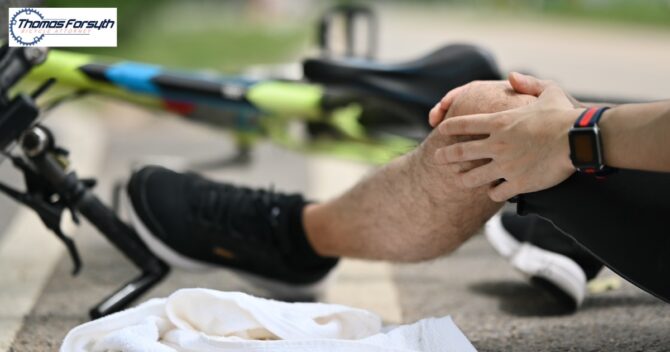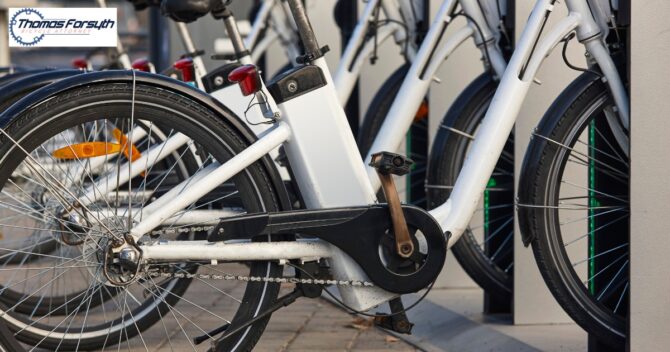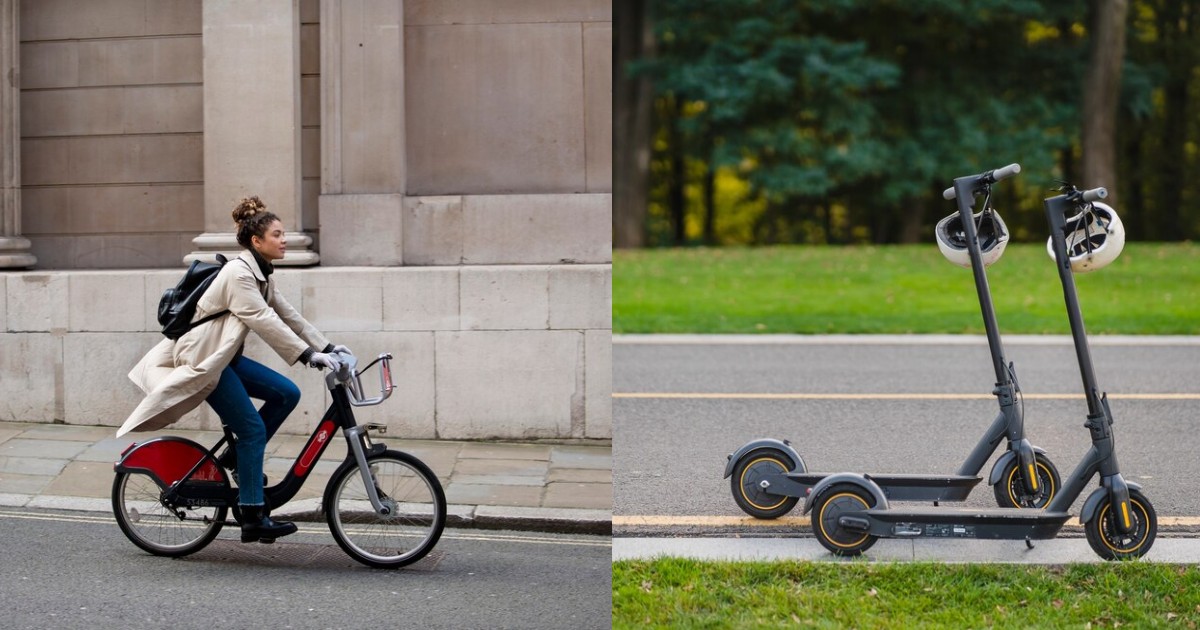As a bicycle attorney representing injured riders across California, including Los Angeles and Pasadena, I’ve seen first-hand how life can change in a matter of seconds. If you or someone you know is facing the aftermath of a bike crash, understanding your injury is the first step. Some injuries appear minor but can carry serious long-term consequences. Others are immediately life-threatening.
Here’s a snapshot of the most common injuries cyclists may suffer in a crash:
- Road rash and abrasions
- Bruises and soft tissue injuries
- Fractures and dislocations
- Head and brain trauma
- Spinal cord damage
- Internal bleeding or organ damage
- Emotional trauma and PTSD
Whether you’re riding a standard bicycle or an e-bike, the risks remain real. And if you’re searching for answers about common cycling injuries in Pasadena, you’re in the right place.
Read Also – Injured by Potholes or Road Defects? Know Your Rights and Legal Options
Scrapes and Surface Wounds: Don’t Ignore the Small Stuff
Road rash, cuts, and bruises may seem like minor annoyances—but they can lead to infections, deep tissue damage, and scarring. Cyclists thrown from bikes often slide on pavement, peeling away layers of skin. While not life-threatening, these injuries require prompt medical attention and can become evidence in a claim if they affect your ability to work or function normally.
Muscle Damage, Sprains, and Contusions: Hidden Disruptors
Soft tissue damage is harder to detect than broken bones. Strained muscles, pulled ligaments, and deep bruises can interfere with mobility and cause ongoing pain. You may find yourself sidelined for weeks—unable to ride, work, or even perform daily tasks. Keep records, seek treatment, and understand that these injuries are often undervalued by insurers.
Broken Bones and Dislocations: The Fracture Factor
Wrist, collarbone, hip, and rib fractures are among the most frequent injuries from falls and vehicle impacts. Dislocations, especially of the shoulder or elbow, often result from trying to break a fall. These conditions may involve surgery, casting, or physical therapy. In many road accident injuries in Pasadena, these orthopaedic damages are central to both recovery and compensation claims.
Head and Brain Injuries: When Every Second Counts
Even with a helmet, cyclists can suffer concussions, skull fractures, or worse—traumatic brain injuries (TBIs). Symptoms aren’t always immediate but may include memory issues, headaches, or loss of concentration. When you or a loved one shows signs of disorientation or nausea after a crash, get emergency care. TBIs carry long-term effects and demand specialized legal handling.
“After my e-bike crash, I was diagnosed with a concussion. I didn’t even realize how serious it was until days later. Thomas Forsyth’s team helped me prove it in my claim and handled everything with care and urgency.”
— A Pasadena Cyclist
Spinal Cord Injuries: Severe and Life-Altering
In high-impact crashes, the spine can absorb massive force. Herniated discs, fractured vertebrae, and nerve damage may result in chronic pain or even paralysis. These injuries require long-term rehabilitation, assistive devices, and sometimes modifications to your home or workplace. This is where having a legal ally who knows the real cost of such injuries is essential.
Internal Injuries: Unseen, but Dangerous
Blunt force trauma to the abdomen or chest can damage internal organs. You may experience internal bleeding, a punctured lung, or injuries to the spleen or liver. These are medical emergencies and can easily be overlooked without imaging tests. If you’ve had a crash and feel dizzy, weak, or short of breath—seek immediate medical care.
Psychological Trauma: When the Pain Is Mental
Not every wound is visible. Some riders develop post-traumatic stress, anxiety, or fear of riding again. This emotional toll is real and compensable under California law if properly documented. If you’re waking up in a panic or can’t get back on your bike, you’re not alone. Legal support can ensure your mental health is not dismissed, when concerned with common cycling injuries in Pasadena.
Factors That Influence Injury Severity
Every bike crash is different. But injuries often depend on:
- Speed of both vehicles involved
- Use of helmet and protective gear
- Road conditions or infrastructure defects
- Type of bicycle (standard or e-bike)
- Impact angle and whether the rider was thrown
In some common cycling injuries in Pasadena, poor road maintenance plays a significant role. As attorneys focused solely on injured cyclists, we know how to gather the right evidence—from police reports to surveillance footage—to build a strong case.
Why Legal Help Can Change the Outcome?
Dealing with recovery, insurance paperwork, and legal questions at once is overwhelming. That’s where The Law Offices of Thomas F. Forsyth steps in—to guide you through all legal issues and protect your rights. Whether the driver was uninsured, you hit a pothole, or your claim was denied—we’re ready to act.
Our legal team knows how to navigate the California legal system, uncover evidence, and push for fair settlements in road accident injuries in Pasadena and surrounding areas.
When Should You Contact a Bicycle Attorney?
- If you were hit by a car or truck
- If your bike accident involved poor road conditions
- If your e-bike malfunctioned
- If the insurance company denied your claim
- If your injuries are long-term or affect your work
Timing is crucial. California law has strict time limits to file personal injury claims. Don’t delay your rights.
Have questions? You’re not alone. Reach out today and take the first step toward justice.
You May Like – How To Avoid A Collision With A Bicyclist: Los Angeles Injury Lawyer Shares How Drivers Can Help Keep New Bikers Safe
FAQ
What are the worst injuries in a bike crash?
Severe head trauma, spinal cord damage, internal bleeding, and multiple fractures are among the most serious. These injuries can be permanent and life-changing.
How do I find accident footage?
Check nearby businesses, traffic cameras, or local homes with security systems. An attorney can issue preservation letters to secure this footage quickly.
What to check after a bike accident?
Check for injuries, call 911, document the scene, gather witness details, and seek immediate medical care—even for minor symptoms.
How long does it take to recover from a bike crash?
Recovery depends on the injury type. Minor injuries heal in days or weeks; severe cases like TBIs or spinal injuries may require months or even years.





